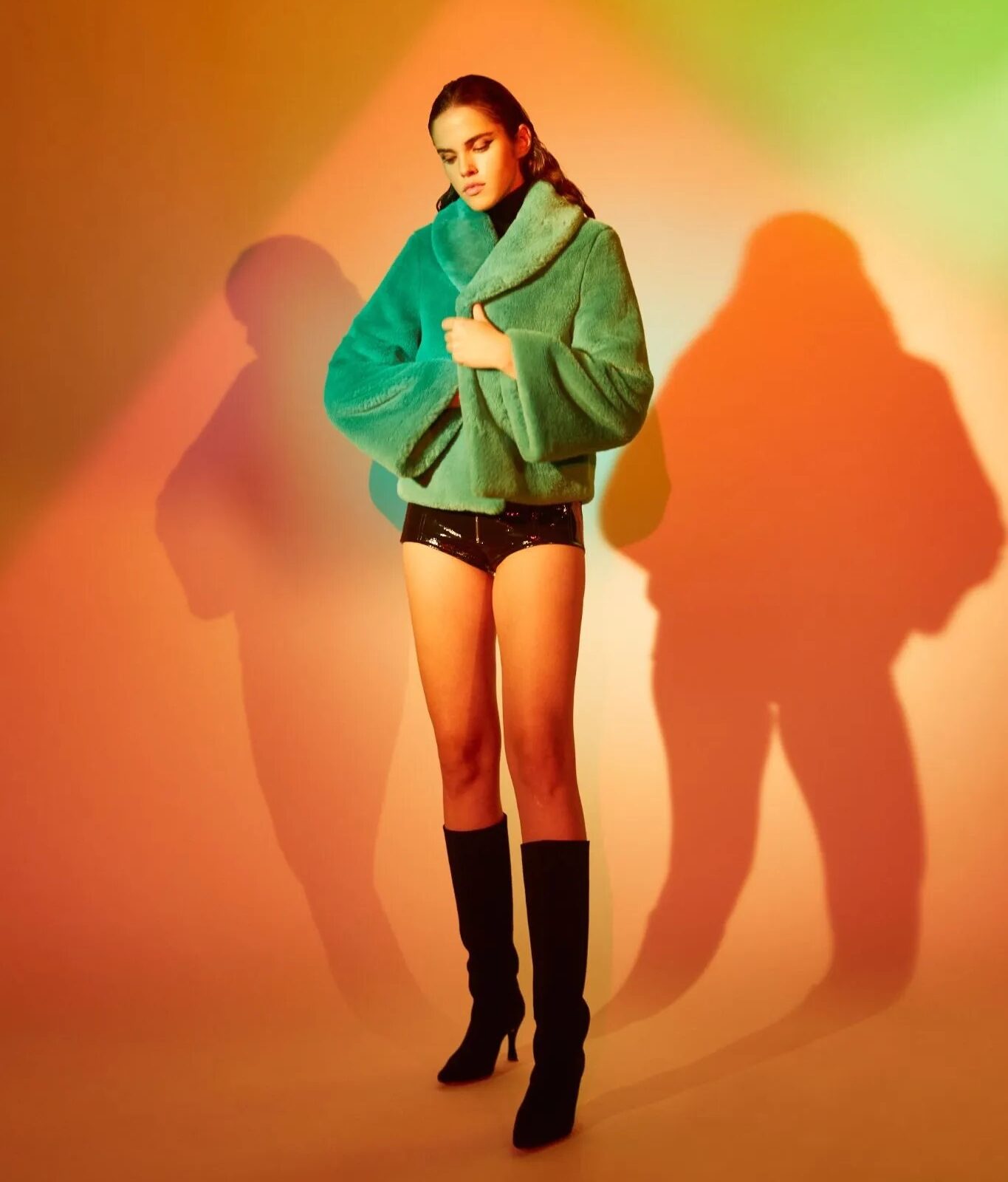
Image credit: Apparis x ECOPEL
Our recent report titled “White Space #1: Sub-categories with limited innovation” covers the four currently under-served material categories of next-gen wool, silk, fur and down. Here, we look at the highlights from the next-gen fur section of the report: its market potential, what makes it special, how traditional fur can be improved upon, and the key targets material innovators should aim for. Stay tuned for our next posts in this series covering next-gen wool and down.
Download the full report for free to learn about white spaces, or see our summary. 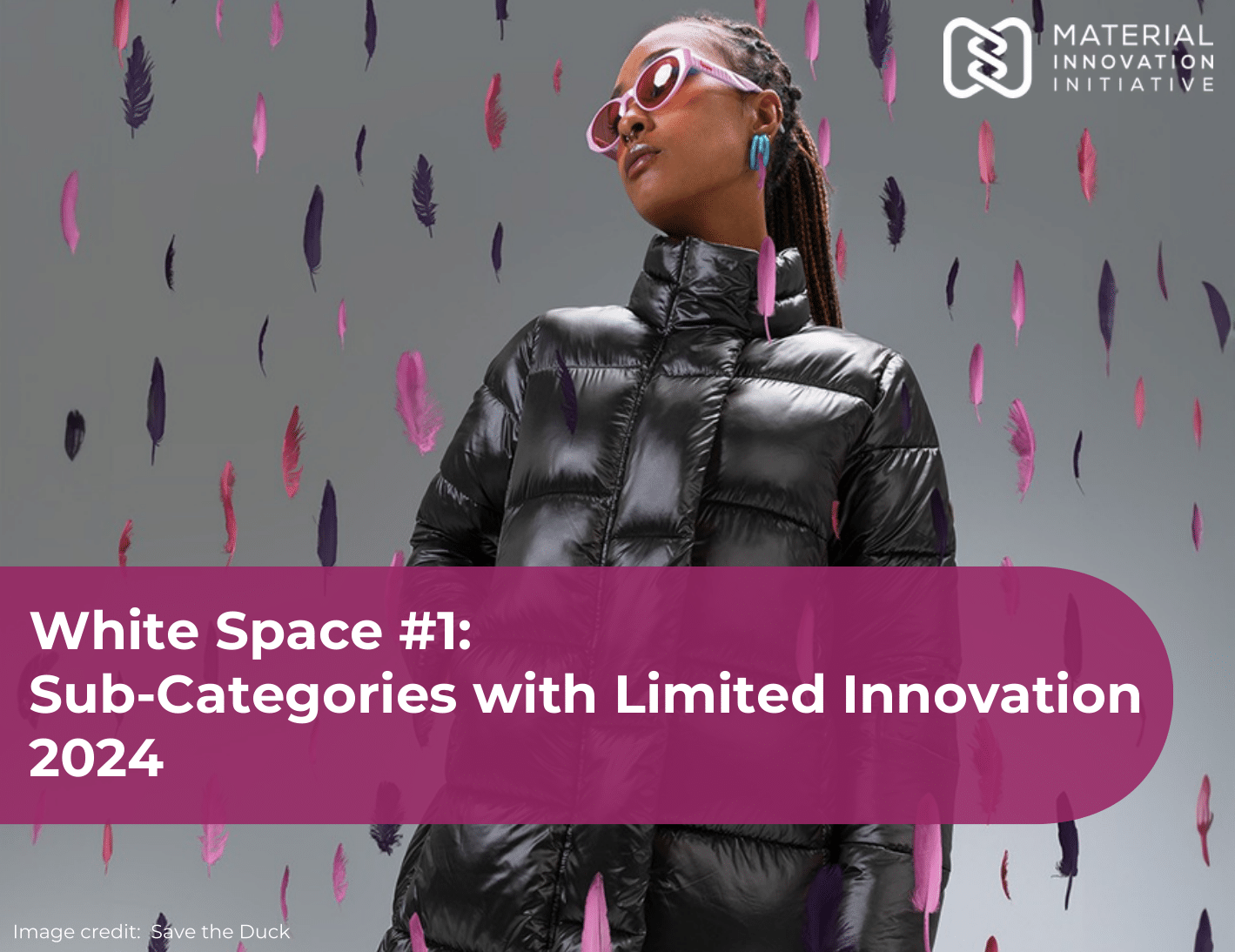 Wondering what we mean by white spaces in the context of next-gen materials? See this blog post. For in-depth information on next-gen fur, please see our What Makes Fur, Fur? Report.
Wondering what we mean by white spaces in the context of next-gen materials? See this blog post. For in-depth information on next-gen fur, please see our What Makes Fur, Fur? Report.
Market Potential
The total addressable market size for next-gen fur is significant, in part due to public opposition to animal-based fur and related bans, leading to a decline in global fur production from 140 million animals in 2014 to 42 million in 2021. Although synthetic furs have environmental concerns, public awareness is low, driving market growth. Valued at USD 25 billion in 2022, the synthetic fur market is expected to grow at a CAGR of 8.8% from 2023 to 2031.
Uniqueness: What makes fur so special?
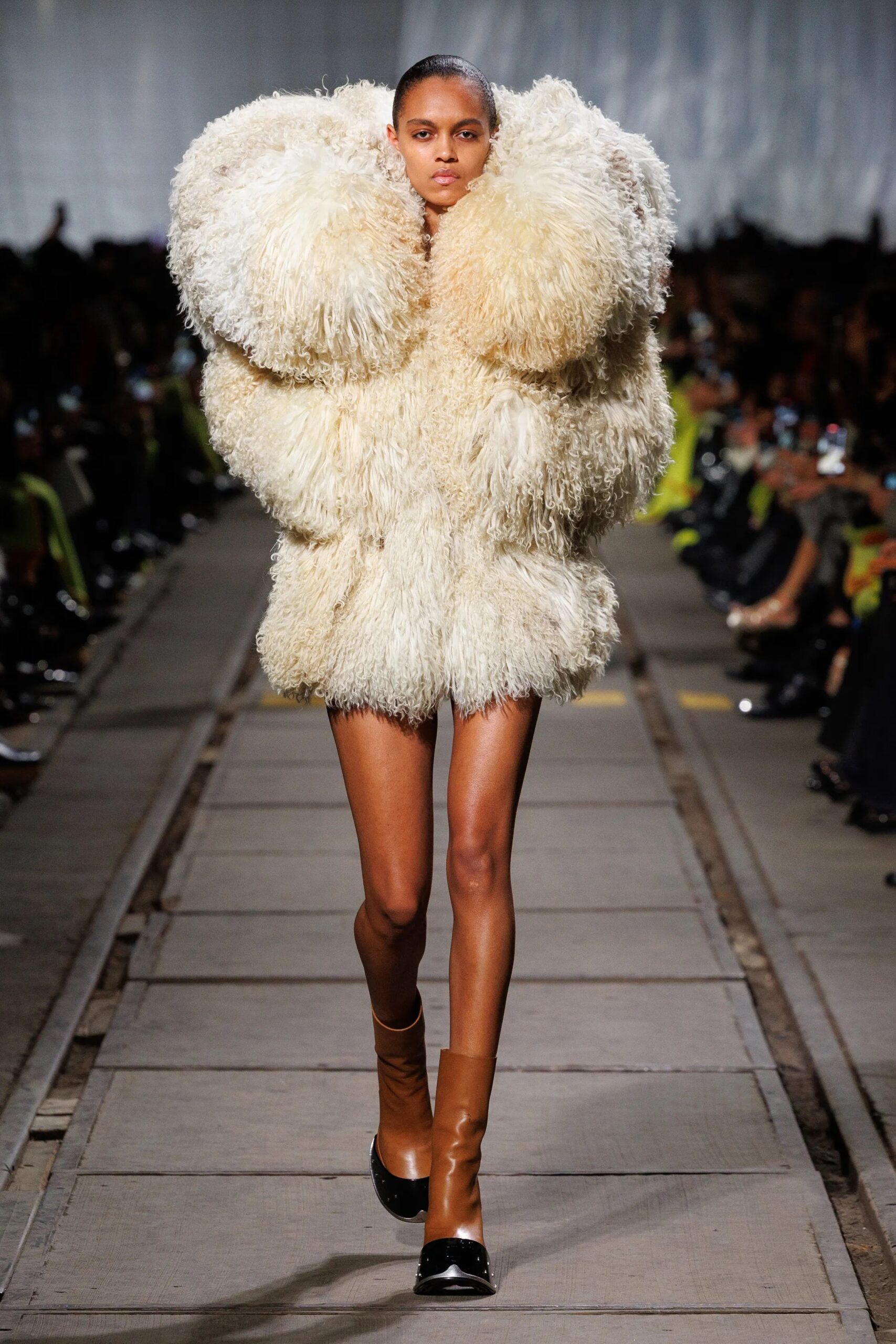
Alexander McQueen showcased larger-than-life faux Mongolian sheep fur outerwear for their Fall 2024 Ready-to-Wear collection. Image credit: Alexander McQueen
Fur is multi-layered: both physically and conceptually
Fur is a unique material from both a design and scientific perspective. It has a wide diversity of applications in terms of the many types of products it can be used in, from coats to keychains to rugs. It is also one of the few materials which can simultaneously conjure images of luxury and rusticism. Humans are drawn to fur, perhaps more than any other material, we often have an involuntary urge to touch it. But how people perceive fur varies widely, for some it’s the height of luxury while for others it represents the ultimate human disregard for animal suffering.
Fur has a variety of aesthetics and hand-feels
Animal-based fur comes from a variety of animals and produces various colors, textures, and hand-feels. Animal fur is special due to its complexity and multi-layered structure.
Fur is highly customizable. It can resemble the animal’s original coat or be dyed in both “natural” and bright fashion colors. Patterns can be created through patchwork, using multiple colors, changing hair direction, or trimming.
Fur’s functionality and structure
Fur is one of the most thermally insulating animal-based materials, providing warmth and dryness to the wearer. While animal fur is naturally flame retardant due to its protein-based fibers, synthetic fur often requires additional flame retardants.
Innovation Potential: How can fur be improved?

Ducks swimming through an algae bloom common in waters near mink fur farms in Nova Scotia. Nova Scotia, Canada, 2014. Image Credit: We Animals Media / Jo-Anne McArthur.
Animal-based fur production involves inhumane conditions, cruel slaughter methods, and inefficiencies in sourcing and manufacturing. Farmed animals require extensive resources for breeding, care, feeding, and slaughter, while wild-trapping involves labor-intensive processes. Significant waste occurs as furriers aim for consistent patterns and color, with many parts being unusable. These animals also pose public health risks, as seen in the Covid-19 pandemic, due to their potential as zoonotic disease incubators.
Moving towards plant-based sources can eliminate these risks, offering opportunities to innovate fur’s thermal properties and durability beyond biological constraints. Animal fur is high maintenance, requiring specialized care, unlike next-gen fur which promises reduced maintenance needs and seasonless applications. Contrary to perception, animal-based fur depreciates over time and is not a sound investment, whereas next-gen fur can be manufactured efficiently to meet various price points.
Key targets for creating fur alternatives
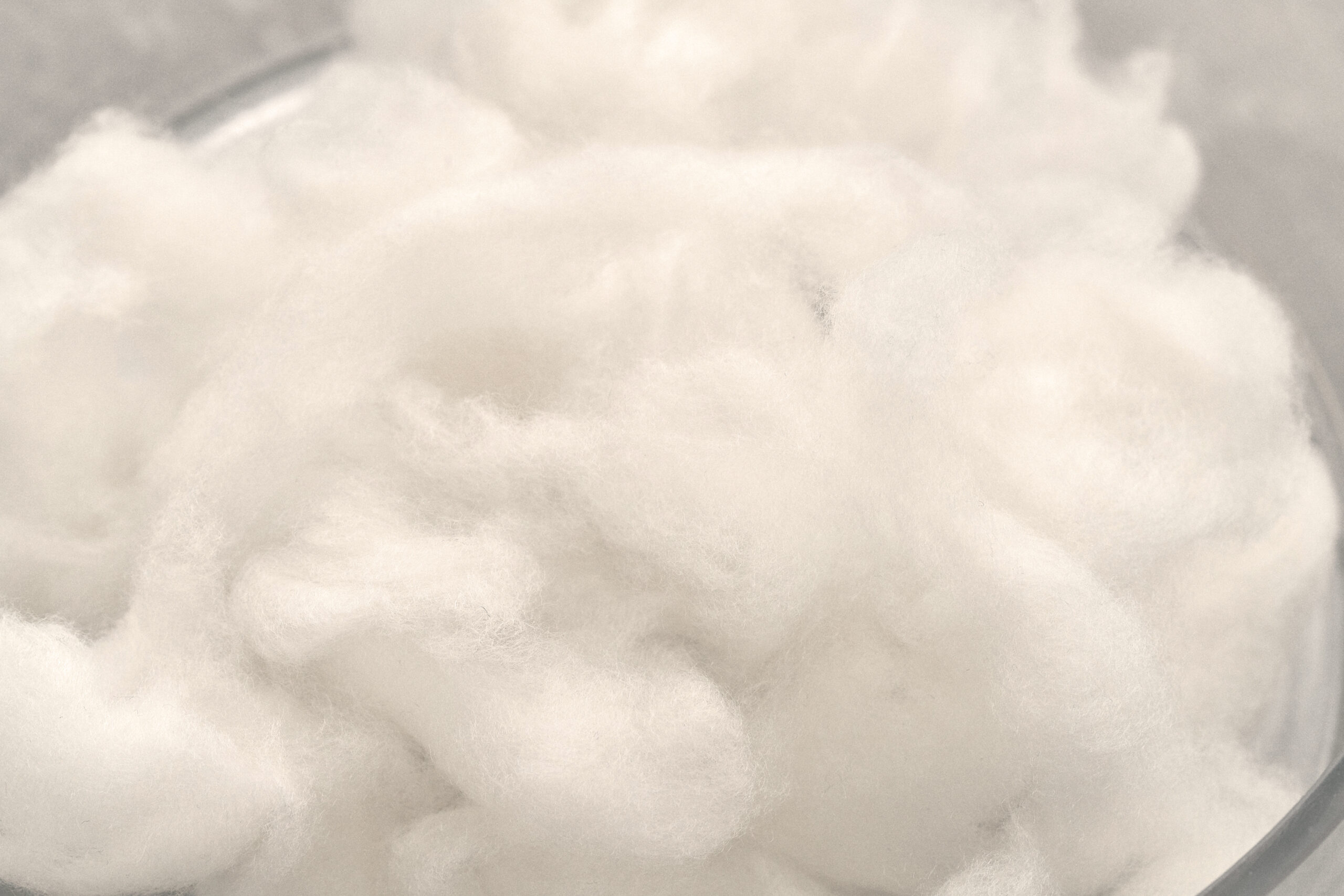
Spiber’s Brewed ProteinTM Stable Fiber. Image credit: Spiber
For next-gen fur to be successful, it needs to improve upon the existing material. While all next-gen furs should (by definition) have a lower environmental impact without the animal-cruelty, these factors alone are not sufficient for success. Next-gen furs must also improve on the performance attributes of fur and be cost-competitive.
Key environmental targets include using mostly bio-based or recycled inputs, making products recyclable or biodegradable, minimizing microfiber

Image credit: DevoHome
shedding, using green chemistry for dyes and treatments, and reducing carbon emissions, water use, and land use during production.
Tunability and variety are key
To be successful innovators must be able to offer a portfolio of fur product offerings for adoption by brands. Animal-based and synthetic furs have a wide variety of colors, prints, patterns, textures, and lengths. Next-gen materials will need to meet this variety of options but also have the potential to expand beyond, akin to the novel colors and textures offered by current-gen synthetic fur.
Download the full report: White Space #1: Sub-categories with limited innovation for in-depth coverage of next-gen fur and the other untapped materials in white space number one; you’ll also discover the material innovation companies that are currently working on next-gen fur and fur fibers.
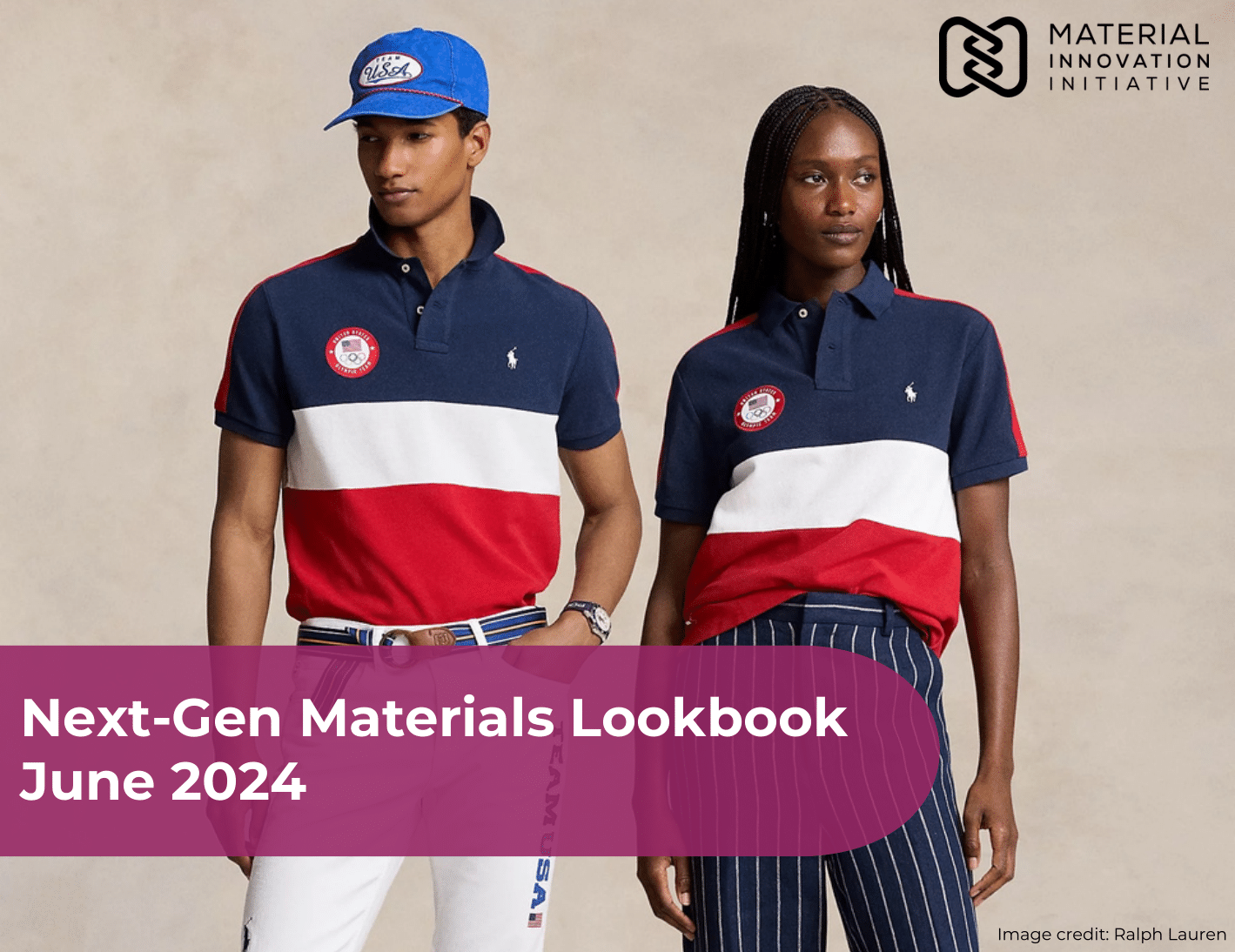 Want to see some real-world examples of next-gen fur? Check out our monthly next-gen materials “lookbooks” to see the latest brand and material company partnerships.
Want to see some real-world examples of next-gen fur? Check out our monthly next-gen materials “lookbooks” to see the latest brand and material company partnerships.
Don’t forget to sign-up to our newsletter to be notified when the next report in our white space series is published.
